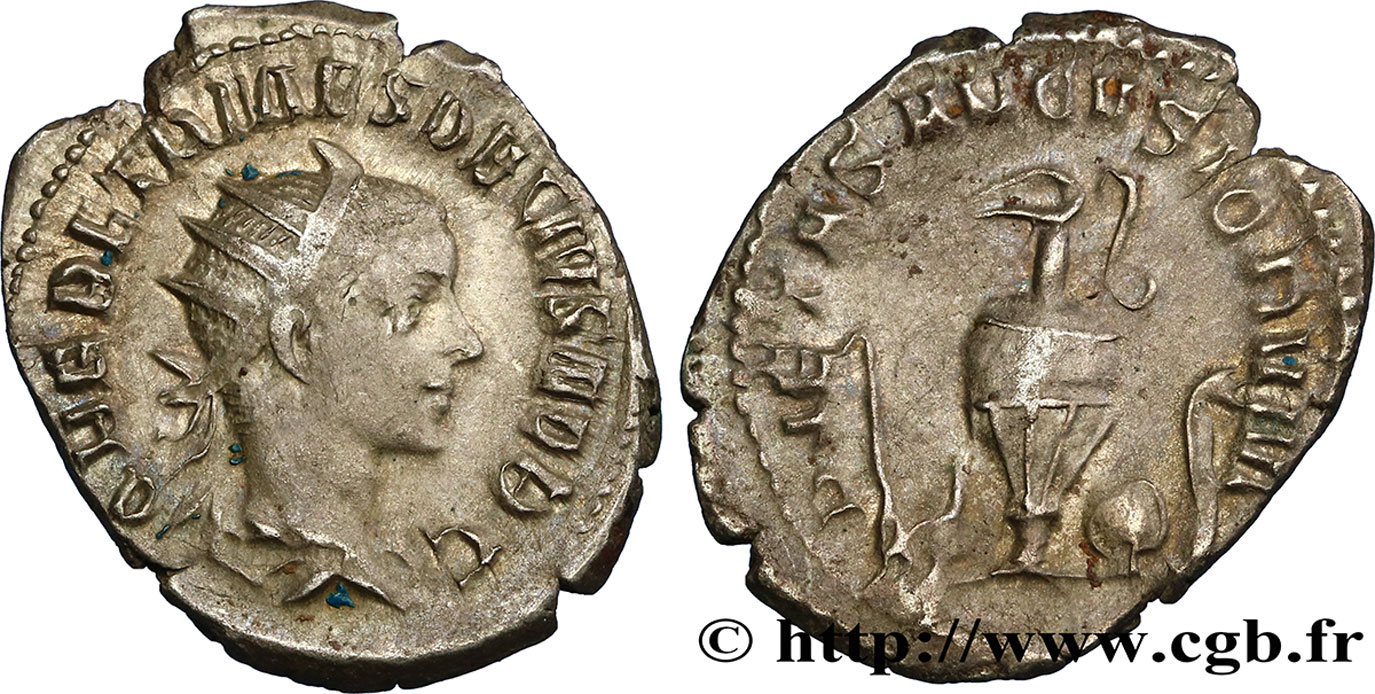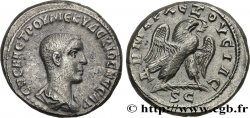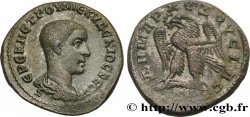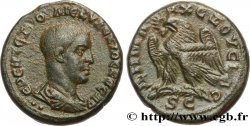E-auction 175-108879 - brm_209899 - HERENNIUS ETRUSCUS Antoninien
You must signin and be an approved bidder to bid, LOGIN TO BID. Accounts are subject to approval and the approval process takes place within 48 hours. Do not wait until the day a sale closes to register. Clicking on « bid » constitutes acceptance of the terms of use of cgb.fr private e-auctions.
Bids must be placed in whole Euro amounts only. The sale will start closing at the time stated on the item description; any bids received at the site after the closing time will not be executed. Transmission times may vary and bids could be rejected if you wait until the last second. For further information ckeck the E-auctions F.A.Q.
NO BUYER'S FEE.
NO BUYER'S FEE.
| Estimate : | 115 € |
| Price : | 37 € |
| Maximum bid : | 38 € |
| End of the sale : | 22 August 2016 14:31:30 |
| bidders : | 7 bidders |
Type : Antoninien
Date: 250
Mint name / Town : Roma
Metal : billon
Millesimal fineness : 400 ‰
Diameter : 22,50 mm
Orientation dies : 12 h.
Weight : 3,65 g.
Rarity : R1
Officine: 1re
Coments on the condition:
Exemplaire sur un flan large, ovale irrégulier et échancré à 10 heures au droit, bien centré des deux côtés. Très beau portrait. Revers de frappe un peu molle avec une faiblesse de frappe sur la légende. Une fine patine grise recouvre l’exemplaire avec des reflets mordorés
Catalogue references :
Predigree :
Exemplaire provenant de la collection M. R. de Dijon et du stock de Bertin, vers 1950 (200 F)
Obverse
Obverse legend : Q HER ETR MES DECIVS NOB C.
Obverse description : Buste radié et drapé d'Hérennius à droite, vu de trois quarts en arrière (A21).
Obverse translation : “Quintus Herennius Etruscus Messius Decius Nobilissimus Cæsar”, (Quintus Hérennius Étruscus Messius Dèce très noble césar).
Reverse
Reverse legend : PIETAS AVGVSTORVM.
Reverse description : Instruments pontificaux : aspersoir, simpulum, vase à sacrifices (capis), patère et lituus.
Reverse translation : “Pietas Augustorum”, (La Piété des augustes).
Commentary
Rubans de type 3. Sur cet exemplaire, la capis (vase) est particulièrement intéressante car on y aperçoit sa décoration sur la partie inférieure.








 Report a mistake
Report a mistake Print the page
Print the page Share my selection
Share my selection Ask a question
Ask a question Consign / sell
Consign / sell
 Full data
Full data










